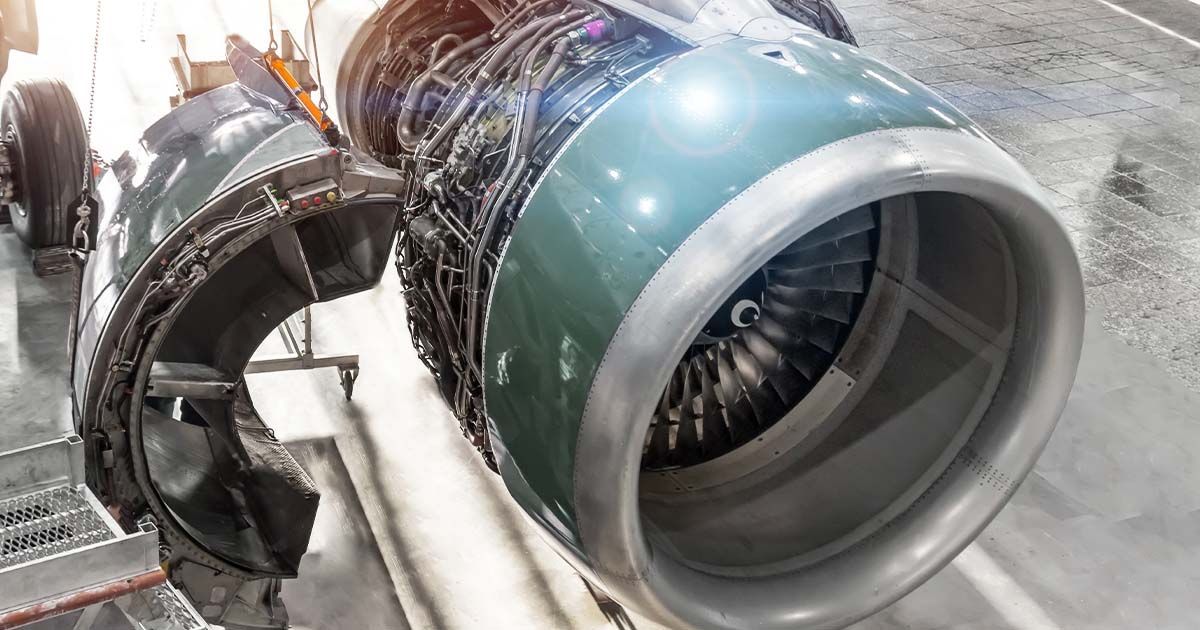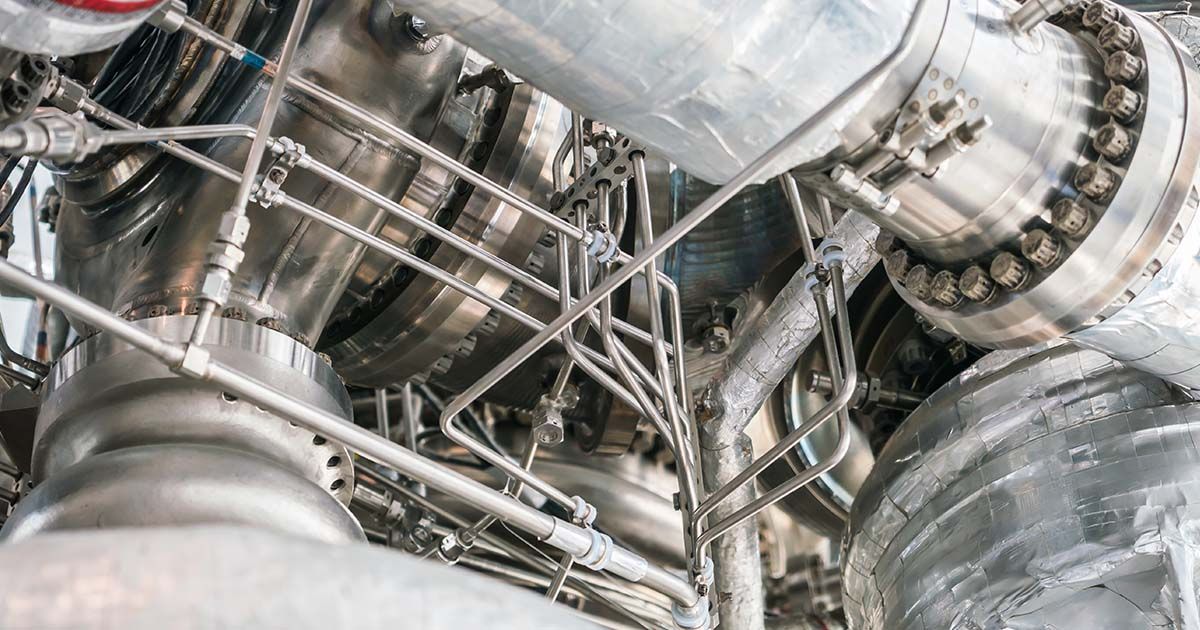
We collect basic website visitor information on this website and store it in cookies. We also utilize Google Analytics to track page view information to assist us in improving our website.

Valued at $321.5 billion US in 2022, the global aerospace market is expected to increase to $678.17 billion by 2032. That’s a compound annual growth rate of 7.80% from 2023 to 2032.
Aerospace as an industry has always thrived off the human desire for exploration and to learn more about the “final frontier.” We strive to know more about existence as a whole, which means travelling beyond the Earth’s atmosphere and reaching for the stars.
More pragmatically, however, factors such as an expanding commercial aviation sector and needs surrounding security and defence are primarily driving growth in aerospace.
So, involving your company in aerospace is a decision seemingly bound for success (if you do everything right.) You’re getting involved in a sector where the ceiling is jaw-droppingly high.
The above notion applies to aerospace parts manufacturing – a multibillion-dollar industry extending to cabin interiors, equipment, aerostructures, engines, etc.
While the chances for a healthy bottom line in this sector are highly enticing and feasible with a healthy dose of expertise and hands-on precision, there are many caveats. In this article, we will explore the intricacies of aerospace parts manufacturing and the role of plasma cutting in achieving its strict specifications.
At Amber Steel, we specialize in laser, plasma and flame cutting, and have always been a "total source" service for the production of quality steel products. Quality is achieved by utilizing the right production technique for the right product. Our continual investment in equipment and technology enables us to offer clients many production alternatives to achieve exact product specifications and tolerances. If you’re interested in learning more about steel cutting or have a project in mind that you would need our expertise on, do not hesitate to reach out. We’re always one email or phone call away.
Anybody looking to make their mark in the aerospace industry will face demands that include:
The rigidity of specifications.
Extremely high component quality standards.
Aircraft and spacecraft encounter extreme conditions during their operations and can’t be failed by their nuts and bolts. They need robust, durable, and reliable components that withstand and operate reliably, regardless of the situation.
Let’s delve further into some challenges aerospace components must face:
Extreme temperatures (e.g., intense engine-area heat and the glacial, sub-zero conditions in space or at high altitudes) put aerospace components under continual duress.
Pressure changes continually inflict themselves upon components, which must endure during such instances (e.g., during takeoff, spacecraft re-entry, or cruising at high altitudes).
Mechanical stress causes intense vibrations during flight takeoffs and landings, calling for enhanced durability and robustness of parts.
Suppliers and manufacturers must meet – and preferably exceed–these intensive, highly rigorous standards. Those successful in doing so will have a competitive edge in the market, enjoying a steady line of long-term clients and fruitful revenue streams.
Plasma cutting uses accelerated hot plasma jets to cut through electrically conductive materials.

It’s used in aerospace because it has the following properties:
Plasma cuts through aluminum alloys (preferred in aerospace due to their lightweight, strength, and resistance to corrosion) with superior thickness. It cuts through aluminum up to 160mm (compared to the 25mm of laser cutting). Its equipment and operating costs are also lower.
2024, 7075, and 6061 are aluminum alloys used in aircraft skins, engine parts, and frames, popular for high-performing strength-to-weight ratios.
Plasma-cutting manufacturing for titanium alloys (a lightweight, strong, and corrosion-resistant material) is ideal for hard-to-reach angles. It also shines for hard-to-fit parts. Titanium is used in airframes and jet engines, holding firm against high temperatures.
Nickel Alloys–especially Inconel, a nickel-chromium alloy–maintain strength over a wide temperature range. Thus, they’re commonly found in turbine engines. Plasma cutting can reduce material hardness, helping enhance the cutting process with tools.
Magnesium alloys are vital in weight reduction (e.g., gearbox casings and interior aircraft components). However, flammability and corrosion issues limit their usage. Plasma cutting cuts magnesium at higher speeds and lower operational costs than other methods.
Copper alloys have excellent electrical conductivity and are, as such, implemented into electrical components and heat exchangers/cooling systems. Plasma cuts through copper faster than other methods while maintaining precision, making it ideal for large-scale projects.
Carbon fibre, reinforced polymers, and other composite materials offer an alternative to metals in aerospace due to their lightness in weight, high strength, and ability to stave off corrosion. Found in airframes, wings, and interiors, composite materials benefit from being cut with plasma due to precision and repeatability.
Highly complex superalloys are based on nickel, cobalt, or iron, found in chromium, molybdenum, and titanium to enhance properties. As discussed beforehand, Inconel (a superalloy) is typically utilized in aerospace manufacturing. Hastelloy is, as well. Plasma can cut hastelloy safely, seamlessly, and quietly, more than other cutting methods like arc air.
Precise dimensions are absolutely vital when creating products for aerospace parts manufacturing.
The margin for error is non-existent, and the extreme conditions encountered in aerospace operations call for rigorous attention to detail.
Pressure and air resistance are critical factors for aerospace vehicles and the environment in which they operate. Optimal aerodynamic performance–yielding enhanced overall performance and fuel efficiency–relies upon precise dimensions.
A lack of dimensional consistency will dwindle away at a component’s structural integrity, causing vulnerabilities and potential failure when faced with stresses like fluctuating atmospheric conditions and high speeds.
Components must meet stringent quality assurance and testing standards to be certified for aerospace applications. This includes having precise tolerances and dimensions.
Safety, performance, cost-efficiency, regulatory compliance, and fostering industry-wide technological growth all rest on exact dimensions and minimal error margins. No compromises can be made in any of these aspects, or else there’ll be catastrophes, increased costs, and other seismic consequences.
These fundamental standards and certifications are all relevant to the aerospace parts manufacturing industry:
The AS9100 Series is widely adopted by the aerospace industry as the standardized quality management system.
This quality management standard applies to manufacturing processes, ensuring regulatory requirements and customer expectations are met.
ISO 9001 is a global quality management system standard that includes aerospace and is typically a manufacturer's base-level requirement.
NADCAP (National Aerospace and Defence Contractors Accreditation Program) provides specific process accreditation (e.g., for coatings, welding, or non-destructive testing) and can extend to plasma cutting aspects.
FAA (Federal Aviation Administration) Regulations apply to the US and involve aeronautical maintenance and manufacturing. Compliance with these regulations is crucial if plasma cutters/parts manufacturers want their parts used in the US.
EASA (European Union Aviation Safety Agency) Certification is the same as the FAA, except it instead applies to the European Union’s aviation safety standards. These standards must be followed if you want your manufactured parts to reach the European aerospace market.
AMS (Aerospace Material Specifications) Standards specify aerospace materials, practices, and processes. They’re developed by SAE International and generally apply to any cut and processed materials in the aerospace manufacturing sector.
ASTM International Standards apply to vast services and materials, extending to aerospace manufacturing processes.
MIL-Spect (Military Specifications) are physical and operational characteristic standards for military-grade products. They impact manufacturers who work in the defence aerospace industry.
ITAR (International Traffic in Arms Regulations) and EAR (Export Administration Regulations) compliance are US regulatory standards that oversee the manufacturing, exporting, and transfer of articles and services relating to defence. Manufacturers working in aerospace defence must familiarize themselves with these regulations.

Here’s a list of why plasma-cutting manufacturing and aerospace present a synergistic combination:
Precision: Plasma cutting for aerospace is an ideal fit due to its precision–especially the cutting-edge high-definition plasma offered at Amber. Plasma’s ability to maintain this accuracy through varying thicknesses means plasma cutting manufacturing can rise to aerospace’s rigorous dimensional and tolerance specifications.
Productivity and Efficiency: Plasma cutting presents the best of both worlds–speed and accuracy. Thus, it’s a crucial difference-maker in large-scale production.
Cost-Effectiveness: Plasma works faster than laser cutting (for instance) while delivering top-tier results. That means less work yielding more results, saving money on labour. The precision of plasma cutting also reduces waste materials–you only use what’s needed, meaning you only spend what’s needed. Regarding energy efficiency, it offers a 1:2 ratio per cut versus oxygen cutting.
Flexible Customizations: Plasma machines often focus on producing custom metal parts and patterns. Aerospace and engineering have unique specifications for almost every piece of equipment involved. The specificity of plasma to provide unique results of the highest possible quality makes it ideal for such a scenario.
Below is a set of challenges that must be navigated with plasma cutting for aerospace:
The tight tolerances and required accuracy in aerospace can sometimes outweigh the capabilities of plasma cutting. Intricate designs with exceptionally thin materials can lead to issues.
The high temperatures in plasma cutting can lead to the material’s thermal distortion–a massive problem in aerospace manufacturing. Dimensional accuracy and integrity are crucial, and minimizing heat-induced warping is a continual obstacle.
When temperatures rise during plasma cutting, the material’s integrity and properties (e.g., tensile strength or hardness) can be adversely impacted. The aerospace industry relies on those properties being optimized.
Aluminum, titanium, and other non-ferrous metals appear in aerospace frequently and often pose plasma-cutting challenges because of their reflexivity, which hampers the cutting process.
The re-solidified oxidized material, dross, forms on cut edges when plasma is used–a significant issue. Dross-free cuts are a must to avoid additional finishing processed in aerospace parts manufacturing.
In some instances, plasma cutting can lead to surface irregularities and roughness, generating stress concentrations which could hamper a part’s structural integrity.
Want to offset these challenges while maximizing the benefits of your plasma-cutting parts manufacturing? Partner with Amber Steel. Contact us today to learn more.